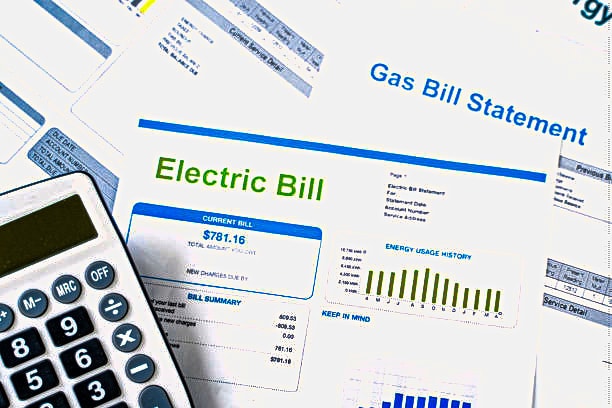Solar panels in Australia are an attractive option for homeowners and businesses alike, but understanding the solar return on investment (ROI) is crucial before taking the plunge. This article delves into the financial breakdown of solar power, including cost savings, government incentives, and the ever-important payback period.
Are you looking to save money on your electricity bills and reduce your carbon footprint? Solar energy is the perfect solution! Energy Matters can help you get up to 3 FREE solar quotes from pre-qualified and vetted solar firms in your area.
Energy Matters has been a leader in the renewable energy industry since 2005 and has helped over 40,000 Australian households in their journey to energy independence. With Energy Matters, you can be sure you’re getting the best possible deal on solar energy. We only work with reputable solar firms with a proven track record of delivering high-quality solar systems.
Understanding the benefits: How solar saves you money
The primary benefit of solar panels is a significant reduction in electricity bills. Solar panels generate clean electricity during daylight hours, offsetting the need to purchase power from the grid. The amount of savings depends on several factors:
Factors affecting your solar ROI
The ROI for solar panels in Australia hinges on several key factors:
- Energy consumption: Homes with higher electricity usage will see greater savings from solar power generation. Analyse your past bills to understand your consumption patterns.
- System size: The size of your solar system (measured in kilowatts—kW) directly impacts your electricity generation and cost. A larger system produces more power but has a higher upfront cost.
- Electricity prices: Locations with higher grid electricity prices offer a faster payback period for solar due to the increased savings on your bills.
- Sun exposure: Sunshine hours in your area significantly affect solar power generation. Check your region’s solar irradiation data to estimate potential output.
- System efficiency: Choose high-efficiency solar panels to maximise electricity production from sunlight.
- Installation costs: Compare solar quotes from reputable installers to ensure a competitive price for quality equipment and installation.
- Feed-in tariffs: These are payments you receive from your electricity retailer for excess solar energy you export back to the grid. Rates vary by retailer and location.
- Government incentives: Federal and state government incentives can significantly reduce the upfront cost of solar panels, accelerating your solar ROI.
The Australian government offers several incentives to encourage solar panel adoption:
- Small-scale Renewable Energy Scheme (SRES): This scheme provides certificates for each kWh of electricity your solar system generates. You can sell these certificates to electricity retailers, reducing your payback period.
- Solar credits scheme: Some state governments offer additional financial incentives in the form of rebates or upfront discounts on the cost of solar panel systems.
- Instant asset write-off: The cost of your solar system can be instantly subtracted from your taxable income in the year of installation for small firms with annual revenue under $50 million (conditions apply).
- State-based rebates: Many states offer additional rebates on top of the federal incentives, making solar even more affordable.
Read more about:
- Home Solar Rebates, Incentives & Subsidies In Australia
- Solar power incentives, loans & rebates for small business
- Solar Battery System Rebates, Subsidies, & Incentives
- Australian Solar Feed in Tariffs Information
- Solar Feed-in Tariff Comparison: Best Tariffs by State and Territory
- Renewable Energy Certificates (RECs) information
- Large-Scale Generation Certificates (LGCs)
- Power Up Your Savings: Government Incentives and Tax Breaks for Solar Panel Installation
Calculating your potential savings
The primary benefit of solar panels is the reduction in your electricity bill. Here’s a simplified breakdown of how to estimate your potential savings:
- Analyse your bills: Look at your past year’s electricity bills and calculate your average quarterly or annual consumption (in kWh).
- Estimate solar generation: Use online solar calculators or consult with installers to estimate the kWh your system would generate based on your location and system size.
- Compare costs: Multiply your estimated solar generation by your current grid electricity price to determine the potential annual savings from solar power production.

Example:
- Average quarterly consumption: 2,000 kWh
- Estimated annual solar generation (6.6 kW system): 8,000 kWh
- Grid electricity price: $0.30 per kWh
(Estimated annual solar generation) x (Grid electricity price) = Potential annual savings (8,000 kWh) x ($0.30/kWh) = $2,400
This is a simplified example, and your actual savings may vary depending on factors like feed-in tariffs and your electricity usage patterns.
Demystifying the payback period
The payback period refers to the estimated time for the financial benefits of solar panels (electricity savings and incentives) to offset the initial investment cost. It’s a crucial metric to consider when evaluating your solar ROI. Here’s how payback periods are generally influenced by the factors mentioned earlier:
- Higher upfront costs: Larger systems or premium brands might have a longer payback period despite potentially greater long-term savings.
- Greater potential savings: Higher electricity consumption, higher grid electricity prices, and maximised solar generation can lead to a shorter payback period.
Example:
- The upfront cost of the solar system: $8,000
- Potential annual savings (including SRES certificates): $3,000
Estimated payback period = Upfront cost / Annual savings = $8,000 / $3,000/year = 2.67 years
This example suggests a payback period of approximately 2.67 years. Remember, this is an estimate, and your payback period may vary.
Reducing energy costs with solar energy storage
Adding a solar battery to your solar panel system lets you capture excess solar energy generated during the day and use it to power your home at night, significantly increasing your reliance on clean, renewable energy.
- Harnessing the power of storage: Australia’s excellent solar resources make it a prime location for solar power generation. However, a key challenge lies in maximising the self-consumption of this clean energy. This is where solar energy storage comes in. By adding batteries to your solar panel system, you can capture excess solar power during the day and utilise it at night, significantly reducing your reliance on the grid. This translates to substantial solar battery savings on your electricity bills.
- Boosting your Return on Investment (ROI): The upfront cost of solar panels and batteries might seem high initially. However, the long-term financial benefits are undeniable. Solar energy storage can significantly improve your solar ROI with reduced energy costs and potential government incentives. Studies suggest payback periods for solar battery systems in Australia are becoming increasingly attractive, making the switch to renewable energy a financially sound decision.
- Investing in your future: Solar energy storage isn’t just about saving money today. It’s an investment in a sustainable future. By reducing your dependence on the grid, you’re contributing to a cleaner energy mix and lessening your environmental impact. Additionally, solar energy storage provides peace of mind during power outages, ensuring your home remains powered even when the grid goes down.
Taking the next step: Solar power for your home
You can understand the financial returns and additional benefits and decide whether solar suits you. Here are some next steps:
- Use a solar calculator: Several online tools can estimate your potential electricity savings and payback period based on location and energy consumption.
Use our easy-to-use solar power and battery storage calculator to determine the size of your solar system with storage! Our solar calculator will generate performance information and potential savings.
By carefully analysing the return on investment and considering the environmental and social advantages, solar panels can be a brilliant investment for your home or business in Australia. So, harness the sun’s power and illuminate your path towards a brighter financial future!
Ready to go solar? Get an instant assessment
To find out how much a solar system with storage or even an EV charger will cost, try our easy-to-use solar power and battery storage calculator! It will generate performance data and possible cost savings.
We can forward your information to 3 trusted local installers in your area to obtain free, no-obligation solar quotes.
Find out how much you can expect to pay for solar
Ready to find out more? Get FREE quotes for solar, batteries + more
*Prices quoted are to be used as a guide only and do not factor in state and other rebates and incentives. Includes STC discount.














































